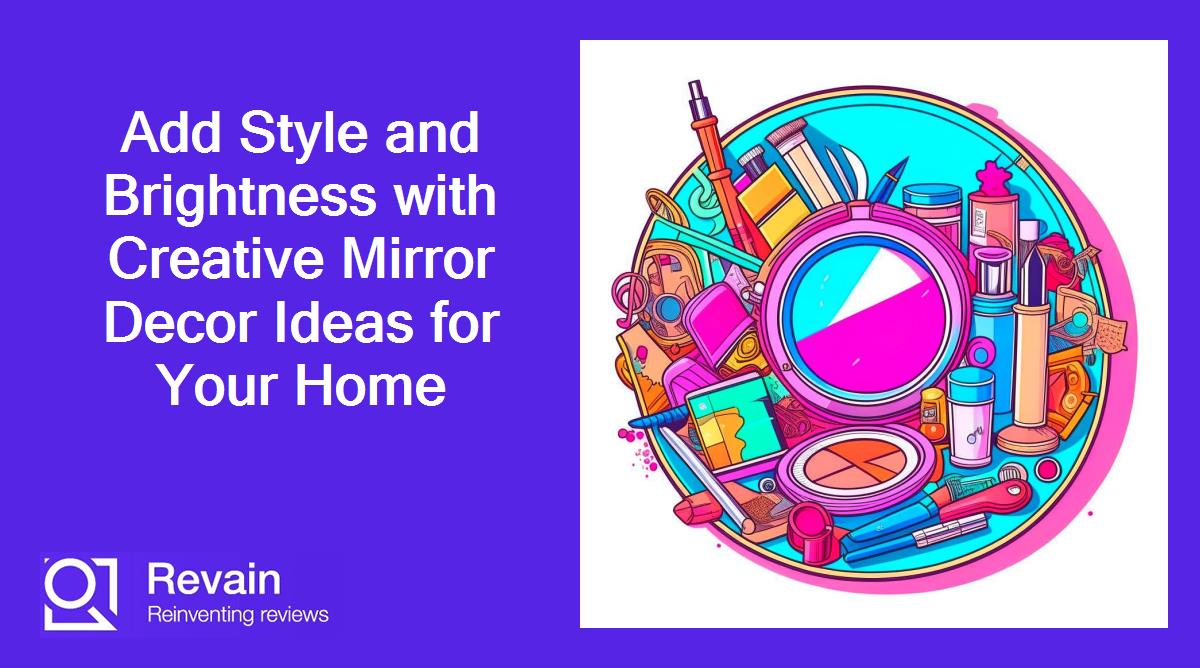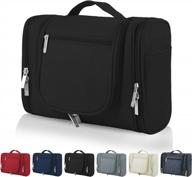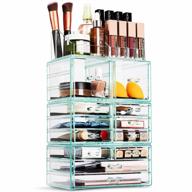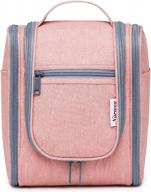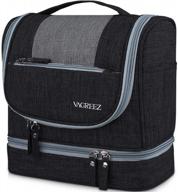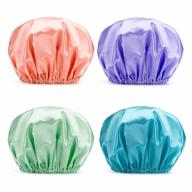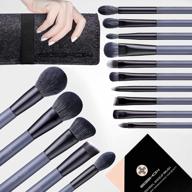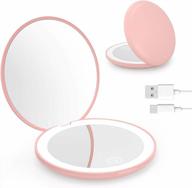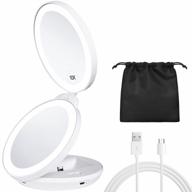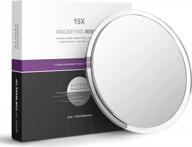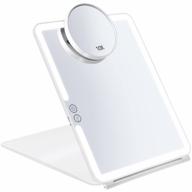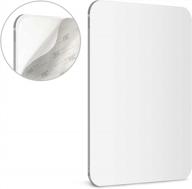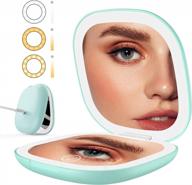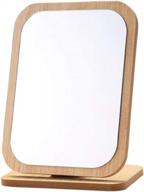Types of Mirrors
Mirrors serve both functional and decorative purposes in home decor. There are many different types of mirrors to choose from depending on your needs and style.
Another interesting products
Standing Mirrors
Standing mirrors, also known as floor mirrors or full-length mirrors, sit directly on the floor and are often placed in bedrooms or near other furniture like dressers. They usually range from 5-6 feet tall so you can view your entire outfit or appearance. Key features include:
- Freestanding - Do not need to be mounted on a wall
- Lean against a wall or stand on their own
- May have adjustable tilt angles
- Wide range of frame styles and materials like wood, metal, leather
Similar products
Wall Mounted Mirrors
Wall mounted mirrors attach directly onto a wall for a built-in look. They come in many shapes and sizes to fit bathrooms, bedrooms, entryways, and more. Features include:
- Attached with hardware to studs or drywall anchors
- No freestanding frame or legs
- Often hung above furniture like sinks, dressers, and consoles
- Common shapes: rectangle, circle, oval, square
Lighted Mirrors
Lighted mirrors have built-in lighting to illuminate your reflection. The light source may surround the frame or be recessed behind the mirror. Benefits include:
- Provide task lighting for applying makeup, shaving, styling hair
- Offer brightness needed for detailed grooming
- Some have dimmable controls to adjust light level
- LED bulbs often used for energy efficiency
Top products in 🪞 Mirrors
Magnifying Mirrors
Magnifying mirrors have curved lenses to provide an enlarged reflection, making them useful for applying makeup and grooming. Key features:
- Lenses may be 5x, 7x, 10x magnification strength
- Allow seeing fine details on face like eyebrows, eyeliner
- Travel sizes available for purse or overnight bag
- May have built-in lighting around magnified area
Decorative Mirrors
Decorative mirrors have ornate, artistic frames and serve as focal points in a room. Popular options include:
- Antique mirrors with carved wood or gold frames
- Mirrors with mosaic tile or stained glass borders
- Rustic mirrors made from materials like driftwood
- Oversized mirrors that make a dramatic statement
With so many types of mirrors available, you can find the perfect option to serve both form and function in your home.
Choosing the Right Mirror for Your Space
Selecting a mirror that fits your home decor and lifestyle needs some consideration. Factors like mirror size, location, and purpose should guide your decision. Follow these tips to pick the perfect mirror for your space.
Consider the Size
First, look at the size of the area where you want to hang the mirror. Measure both the width and height to find a mirror that fits without overwhelming or underwhelming the space. Some general size guidelines:
- Entryways: At least 30 inches wide to allow guests to quickly check their appearance
- Bathrooms: 24-30 inches wide above sinks for personal grooming
- Bedrooms: At least 4 feet tall for a standing mirror to see your whole outfit
Factor in the Location
The mirror location also determines what size and style will work best. For example:
- Hallways: Thin horizontal mirrors give the illusion of width
- Living rooms: Oval mirrors soften corners and add flair over couches
- Bathrooms: Round mirrors open up tight spaces in powder rooms
Match the Purpose
Consider how you plan to use the mirror to pick the right features:
- Getting ready: opt for a lighting mirror for easy makeup application and hair styling
- Creating depth: place strategically across from windows to reflect natural light
- Adding elegance: choose an antique gold frame mirror to elevate formal dining rooms
Test Different Sizes and Shapes
Try holding up different mirror sizes and outlines in the desired spot before purchasing. This shows you how the mirror will look and ensures it provides enough reflection. Mix up rectangles, ovals, round, square, and asymmetrical options.
Account for Proportions
Keep proportion in mind - a mirror that overwhelms or disappears on a wall won't be visually pleasing. Match the mirror width to anchor furniture or stick with the basic guideline that the mirror should be two-thirds the size of the wall space.
With some planning and experimenting, you can choose a mirror tailored exactly for your needs and décor style.
Mirror Placement Tips for Maximum Effect
Strategic mirror placement can help highlight key areas, brighten dark spaces, and make rooms feel more spacious. Follow these tips to maximize the impact of your mirrors.
Highlight Focal Points
Use mirror placement to draw attention to important focal areas in a room like:
- Fireplace mantels by centering a large mirror above
- Artwork by framing the piece with two rectangular mirrors
- Shelves showing decor by mounting a mirror behind
Brighten Up Dark Areas
Add mirrors to naturally illuminate dark parts of a room. For example:
- Entryways and hallways with limited natural light
- Shadowed corners or spaces under staircases
- Rooms with small windows only on one side
Mirrors reflect and bounce light around the space.
Make a Small Room Feel Bigger
Strategically hung mirrors visually expand tight spaces. Ideas include:
- Long horizontal mirror over a narrow console table
- Tall floor mirror in a corner to add depth
- Circle mirror on the ceiling to create illusion of height
Reflect Architectural Details
Showcase beautiful architectural features by mirroring them, like:
- Ornate crown molding
- Intricate tilework or backsplashes
- Arched doorways or windows
Enhance Natural Light
Make the most of sunlight from windows. Position across from the windows so the mirrors can reflect and distribute natural light further into the room.
Layer Mirrors for Added Depth
Hang mirrors across from each other to create an infinite reflection. This visually expands the space and makes room feel larger.
Get creative with mirror placement to highlight, brighten, expand, and reflect. Careful positioning maximizes what mirrors can do for any room.
Mirror Frame Styles and Materials
A frame finishes a mirror design and complements the decor style. Frames come in many shapes, sizes, and materials from sleek to ornate. Consider the options to find the perfect frame for your mirror.
Wood Frames
Wood frames provide a classic, natural look. Types include:
- Unfinished wood like pine for a rustic aesthetic
- Dark stains like walnut for traditional styling
- Light oak or maple for a casual vibe
Distressed wood finishes or carved details like scrollwork give an antique feel. Wood suits bathrooms, bedrooms, and living spaces.
Metal Frames
Sleek metal frames have an industrial, modern look. Metals like:
- Stainless steel for a shiny, cool tone
- Bronze for a warm, rich finish
- Chrome for a clean, bright accent
Metal works in modern, contemporary, and transitional spaces.
Leather Frames
For an earthy vibe, leather mirror frames made from hides provide texture. Options include:
- Natural tan leather for boho-chic style
- Black leather for dramatic contrast
- Woven and braided details
Leather makes a statement in living rooms, bedrooms, and offices.
Ceramic Frames
Glazed ceramic and porcelain mirror frames add color and handcrafted appeal. Designs may include:
- Tile or mosaic patterns
- Colorful borders in tones like navy, green, and pink
- Painted, distressed finishes
Ceramic frames work in kitchens, bathrooms, and eclectic décor.
Balance the frame and mirror size and let your decor style guide the perfect frame material and finish.
Cleaning and Caring for Your Mirrors
Mirrors need occasional cleaning and care to prevent damage, remove smudges, and keep the reflective surface looking its best. Follow these tips for keeping mirrors sparkling.
Use a Microfiber Cloth
Clean mirrors with a soft, lint-free microfiber cloth to avoid scratches. Old t-shirts also work well. Avoid using paper towels or tissues which can be abrasive.
Spray Cleaner Directly on Cloth
Spray glass cleaner onto the cloth itself rather than the mirror. This prevents liquids from seeping behind the frame and damaging the mirror backing.
Clean with a 50/50 Vinegar and Water Solution
For streak-free shining, mix equal parts white vinegar and warm water in a spray bottle. The natural vinegar cuts through dirt and buildup.
Rinse Completely
Always wipe mirrors until completely dry and free of cleaner residue. Leftover moisture or chemicals can damage mirror coatings over time.
Avoid Harsh Cleaners
Steer clear of products with ammonia, bleach, acids, or abrasives. These can strip mirror backing, dull surfaces, and leave permanent streaks or spots.
Remove Water Spots with Toothpaste
For stubborn water spots, make a paste with equal parts baking soda and water. Gently rub onto affected areas using a soft cloth. Rinse completely.
Prevent Fogging
Apply a small amount of shaving cream to the mirror and wipe off to form a protective barrier. This stops steam from fogging the surface after baths and showers.
Protect with Mirror Socks
Slip soft cloth sleeves over mirrors not in daily use to guard against scratches and dust buildup.
With proper care, your mirrors will maintain their like-new shine and reflection.
Using Mirrors to Make a Small Space Appear Larger
Mirrors can visually expand a tight space to make it feel more open and airy. Take advantage of the reflective and light-enhancing properties of mirrors with these tips:
Hang a Large Mirror
Place a wide mirror on the wall opposite windows. The large reflective surface makes the room seem deeper and longer when it bounces light around.
Position Vertically
Mount a tall, slender floor mirror vertically in a corner. This draws the eye up to make ceilings appear higher.
Use Mirrored Cabinets
Incorporate mirrored cabinets and medicine cabinets in bathrooms or kitchens. The mirrored door doubles visible surfaces.
Add Mirrored Shelves
Install floating corner shelves with mirrored backing. This visually pushes back the walls for a feeling of expanded space.
Layer Mirrors
Hang two mirrors across from one another to create an "infinity mirror" effect. The reflections play off each other for the illusion of extra depth.
Extend with Mirror Tiles
Cover one wall with mirror tiles. The seamless reflective surface makes the whole wall disappear, giving a spacious appearance.
Use on Closet Doors
Replace solid closet doors with mirrored ones to instantly double the feeling of area in a closet space.
Line Entire Wall
For small rooms like powder rooms, run a full-length mirror horizontally along one wall for a widening effect.
Include Mirrored Furniture
Bring in furniture with mirrored surfaces like a vanity, media console, or nightstands to showcase more reflection.
With strategic use of mirrors, cramped rooms can feel more open, airy, and expanded.
Mirror Design and Decor Ideas
Mirrors can serve both form and function in home décor. Get creative with placement, lighting, and frames to showcase mirrors. Here are inspiring mirror design ideas.
Surround with Lights
Accent a mirror with decorative lighting for extra brilliance. Options include:
- Sconces or pendant lights framing the mirror
- LED strip lighting around the edge of the frame
- Candle sconces placed on both sides of the mirror
Add Shelves
Build out a mirror display by flanking it with shelves. This creates an organized vignette to style. Ideas:
- Floating shelves with plants, candles, and decor objects
- Matching wood shelves to complement a wooden frame
- Glass shelves for an airy, transparent look
Create a Gallery Wall
Group a collection of different sized and shaped mirrors together for a gallery-like look. Mix and match:
- Vintage frames with painted frames
- Large rectangular mirrors with petite round or oval mirrors
- Simple black frames with ornate gold frames
Use Mirrors Functionally
Take advantage of mirrors' reflective properties. Position across from:
- Windows to bounce more natural light into the room
- Fireplaces or TVs to double the focal point
- Dining tables to open up sightlines for socializing
Get inspired by the many innovative ways to decorate with mirrors!
What Are The Different Types Of Mirrors And Their Uses?
Mirrors are a common item in our daily lives, and they come in different types and shapes. Here are the different types of mirrors and their uses:
- Plane Mirrors: These are flat mirrors that reflect images in their normal proportions, reversed from left to right. They are the most common type of mirror used in bedrooms and bathrooms.
- Concave Mirrors: These are spherical mirrors that curve inward like a spoon. They create the illusion of largeness and are typically found in bathrooms and bedrooms. They are also used in everything from shaving mirrors to lighting the Olympic torch.
- Convex Mirrors: These mirrors bulge outward and display a slightly distorted image that is smaller than the actual. They are very useful for safety purposes since they allow you to see more than a plane mirror. Passenger-side mirrors in cars are a common example.
- Spherical Mirrors: These are commonly used in contemporary homes and are known for their unique shape and aesthetics. They consist of a curved surface and can be either concave or convex.
- Non-reversing Mirrors: These mirrors are made by placing two mirrors perpendicular to each other. They are used in optical instruments and scientific experiments.
- Acoustic Mirrors: These are huge concrete dishes built to reflect and distribute sound instead of light. The English military used them before the invention of radar as an early warning system against air attacks.
Mirrors can be used for personal grooming, decoration, architecture, and viewing other items that are not directly visible because of obstructions. They can also be used to create depth and enhance beauty in any home. The right decorative mirror can bring in more light and increase the aesthetic appeal of a room.
What Are The Differences Between Plane Mirrors And Curved Mirrors?
The main differences between plane mirrors and curved mirrors are as follows:
Plane Mirrors:
Curved Mirrors:
In summary, plane mirrors are flat and smooth, while curved mirrors have a curved surface. The reflection of light in plane mirrors is equal to the angle of incidence, while in curved mirrors, it depends on the curvature of the mirror and the position of the object relative to the






